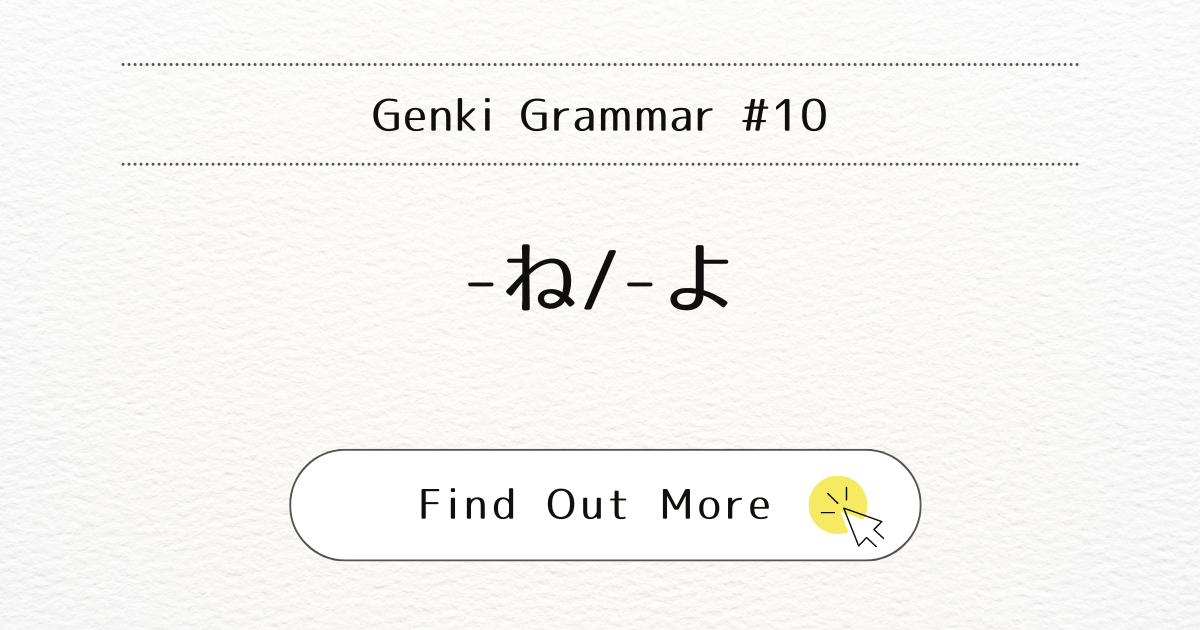
Introduction
Understanding how to use the tags “-ね” (ne) and “-よ” (yo) at the end of sentences in Japanese. These tags help convey your feelings and expectations to the listener. This guide will explain what they mean, when to use them, and provide examples to help you master their usage.
What It Means
- -ね (ne): This tag is used when you are seeking confirmation or agreement from the listener. It can be translated as “right?” or “isn’t it?” in English.
- -よ (yo): This tag is used when you want to inform the listener of something with certainty. It can be translated as ‘I tell you’ or ‘you know’ in English.
When You Use It
- Use “-ね” (ne) when you want to confirm information or seek agreement.
- Use ‘-よ’ (yo) when you want to emphasize and provide information with confidence.
Examples
- Using “-ね” (ne):
- マイケルさんのせんこうはにほんごですね。
(Maikeru san no senkou wa nihongo desu ne.)
Michel, your major is Japanese, right? - これはほんじゃないですね。
(Kore wa hon ja nai desu ne.)
This is not a book, is it?
- マイケルさんのせんこうはにほんごですね。
- Using “-よ” (yo):
- マイケルさんはアメリカじんですよ。
(Maikeru san wa amerika jin desu yo.)
Michel is American, I tell you. - マイケルさんはイギリスじんじゃないですよ。
(Maikeru san wa igirisu jin ja nai desu yo.)
Michel isn’t British, you know.
- マイケルさんはアメリカじんですよ。
Note
- Remember that “-ね” (ne) creates a sense of seeking affirmation, while “-よ” (yo) is used to give new information to the listener.
- The combination of “-よ” (yo) and “-ね” (ne) is used when the speaker wants to provide information confidently while also seeking confirmation or agreement from the listener. For example, in the sentence “すずきさんは にほんじんですよね” (Suzuki-san wa Nihonjin desu yo ne), the speaker is saying, “Suzuki is Japanese, right?” They are confident in the information but are also looking for the listener’s agreement or confirmation.
Conclusion
Mastering the use of “-ね” (ne) and “-よ” (yo) will greatly improve your ability to communicate effectively and naturally in Japanese. By understanding and using these tags appropriately, you can express your thoughts clearly and engage in more dynamic conversations.



